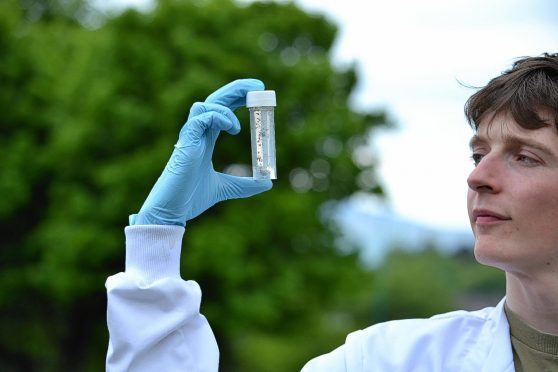One of the best things about winter in Scotland, along with the skiing and the smell of wood fire, is the absence of midges.
But this year, thanks to unseasonally warm weather, it seems nothing is sacred – and they’re here already.
Parts of Scotland were warmer than the Spanish holiday isle of Majorca this week with the Isle of Skye reaching 14c on Tuesday.
But now the world’s leading expert on the biting menace has appealed on Twitter for reports of midges in February.
Dr Alison Blackwell said so far there had been “a few sightings.”
“They are mainly non-biting midges (chironomids) that tend to come out and swarm in the sunny weather,” she said.
“But given the temperatures that have been reached this winter, I think there is a good chance that there a few biting midges about.
“It certainly has been the right conditions and that’s why I’m asking for any reports of people being bitten. It would certainly be the earliest seasonal records.”
Already, a number of people have responded to Dr Blackwell’s Twitter request.
Daniel Gerber wrote:”Was surprised to see them this early given the recent colder weather”, while Fiona Fraser from Gairloch in Wester Ross added:”got a couple of bites? Could be midge?”
The larvae of Culicoides impunctatus – the scientific name for the Highland biting midge – overwinter in the soil and usually begin to emerge as adults in May and June the following year. These adults then lay eggs that develop relatively quickly to give a second emergence of adult midges in July.
More midges were about last year – but not at record levels, the official end of season report on the biting beastie revealed.
But the study showed regional differences over the chances of being bitten.
While Wester Ross and Sutherland were having to deal with a major rise in midges – other parts of the Highlands were dealing with less.
The Scottish Midge Forecast revealed that the North West region recorded a staggering 21 percent rise in midges.
But there was a 6 percent fall in the insect’s numbers around the other main recording area of Argyll.
Dr Blackwell, whose company runs the Scottish Midge Forecast, said the difference could be simply explained by localised weather patterns. Midges prefer warm and damp and low wind conditions.
“The 2016 season started off with major emergences across Scotland’s midge territory, equalling those seen in the record midge season of 2014,” said Dr Blackwell.










